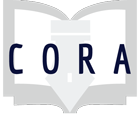Assignment
“Four Moves and a Habit” in General Chemistry Lab
During this activity, students work with their lab partners to apply Mike Caulfield’s “Four Moves and a Habit” to a piece of science information they have found on the open web.
- Upon completing this activity, students will
- Identify strategies to evaluate scientific information or media on the web in an efficient manner
- Understand the characteristics that differentiate scholarly versus popular literature
Information Literacy concepts:
Individual or Group:
I use this activity every year in the lab section of General chemistry. At this level of chemistry students are rarely doing research work that involves chemistry literature, and don’t necessarily have chemistry research questions or a need for understanding the library research databases for for the class. However, students at this level are engaging with science information in the classroom and outside the classroom, and this is a great opportunity to build skills needed to engage with information in online spaces.
Since I developed this assignment, Mike Caulfield has developed a new framework based on the Four Moves, called SIFT. At this point I’ve stayed with Four Moves and a Habit because it comes with an open textbook that I can assign pre-class reading from, and because the named concept of lateral reading has been useful for students.
Many thanks to Andrea Verdan, Seattle University Chemistry, for her work on developing this lesson plan and developing the pre-lab quiz questions.
I’ve included a lesson plan, word document of the in-class activity, and copy of quiz questions used in Canvas as a pre-lab quiz. The lesson plan does not include much of the language I use to describe the concepts. If you want to know how I frame my explanations, please don’t hesitate to ask!
THe most successful way to teach these moves is to demonstrate them live, with all the risks that may entail. It is useful to identify one or two examples that you can use to practice the different moves. During the activity it is useful to keep an eye on the collaborative document (Google Doc) students are working on, and use it to check in with individual groups.

